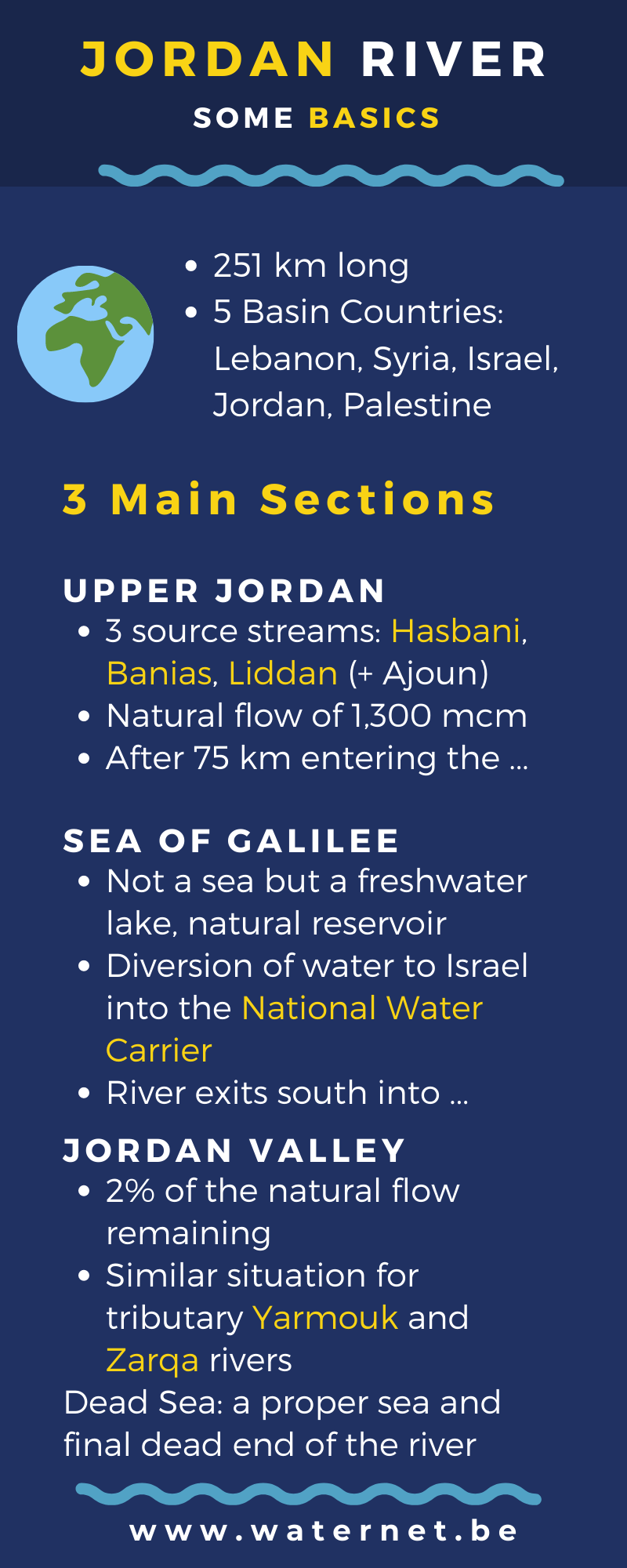Institutions for water management and water resources in Jordan
- Ministry of Water and Irrigation
The Ministry of Water and Irrigation (MWI) is the official body responsible for the overall monitoring of the water sector, water supply and wastewater system and the related projects, planning and management, the formulation of national water strategies and policies, research and development, information systems and procurement of financial resources. Its role also includes the provision of centralized water-related data, standardization and consolidation of data. (from the Ministery website)
- The Water Authority of Jordan (WAJ) is in charge of water & sewage systems
- The Jordan Valley Authority (JVA) is responsible for the socio-economic development of the Jordan Rift Valley, including water development and distribution of irrigation
Policies and strategies
Several water strategies and related development strategies have been published on different websites. We file these documents off-line, in case links to their original location are broken
- MWI, National Water Strategy (2016-2025)
- MWI, National Water Strategy (2008-2022) (published 2009). See also a summary of the strategy on UNEP.
- MWI, Jordan's water strategy and policies, 2004
- Water strategy for Jordan, 1997
- Ministry of Planning and International Cooperation, Jordan Response Plan for the Syria Crisis 2020-2022, contains references to national water security.
- Ministry of Environment, A national green growth plan for Jordan, 2017.
Status: the plan is not yet adopted as government policy.- Interesting: indicators for monitoring and measuring green growth, page 137 (figure 6.2), including water related indicators.
- Interesting: turning a threat into opportunity: "The green growth opportunity in Jordan is clear. The benefits of pursuing green growth can far outweigh the costs of implementation, with Jordan’s national circumstances (e.g. lack of fossil fuels and water resources) making it unusually well positioned to seize opportunities."
- Jordan 2025 - A national vision and strategy - 2018 (Part 1 and Part 2). Also called "Vision 2025".
"The Vision 2025 document emphasises the imbalance between water demand and available resources." - Regional NGO Master Plan for Sustainable Development in the Jordan Valley (2015).
This plan has been proposed to the governments of Israel, Jordan and Palestine; adopted upto now only by Jordan.
Examples of actions
- GIZ, Efficient and sustainable management of water resources in Jordan (2019-2021)
- From the Who’s Who in Jordan’s Energy, Water & Environment (EWE) website: actions as part of the 2016-2025 strategy:
"The water investment capitalizes on areas of improvement according to the government’s Water Strategy to encourage efficient use of natural resources, to augment water supply, to expand wastewater treatment and to minimize water losses. The current five prospective investment opportunities are:
1. Aqaba-Amman National Conveyance project (AAWDC Project): To enhance the Kingdom’s national water security by producing potable water through desalination at the Gulf of Aqaba and transferring 150MCM/Year of additional water to Amman.
2. As Samra Treatment Plant (3rd phase/2nd expansion): To expand the capacity of the plant by an additional treatment capacity of 100,000 CM per day and to establish a solar power plant with 10 MW capacity.
3. Non-Revenue Water (NRW) Reduction: To reduce physical and commercial water losses in Amman.
4. Hisban Brackish Water Desalination 10-15 MCM/Year: The project aims to augment water sources by 10-15 million cubic meters per year (through the drilling of 10 wells) and to develop solar energy to provide about 15MW.
5. Al Ghabawi Wastewater Septic Tank Facility Project: The project aims to construct a new septic 25-tank facility to replace and relocate an existing facility currently co-located at Ain Ghazal. The capacity will be 25,000 cubic meters per day located at Al Ghabawi. In the same context, and with a view to reduce water losses to approximately 30% by 2025, the ministry has implemented a large number of water projects which include the construction of new pumping stations, distribution networks and subsectors of the National Water Carrier system; which all leads to water empowerment to face the challenges, developments and growing needs while lifting the cost recovery rate of operation and maintenance to 100% in 2021, as well as the proportion of the total cost recovery to 74% including a reduction of governmental subsidy for the water sector."


